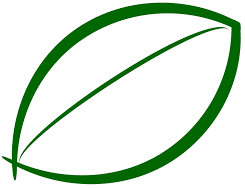Mushroom, being fungi, are heterotrophic in nature. They are saprophytic or symbiotic or parasitic in their mode of nutrition. They grow abundantly during rainy season. They comprise a large heterogeneous group with different shape, size, colours, forms etc. Actually mushrooms are the fruiting bodies of higher fungi i.e, Basidiomycotina and Ascomycotina. Pacioni (1985) made a clear distinction between ‘Mushrooms’ considering only the edible species and ‘Toadstools’ as inedible or poisonous species.
The study of fungal diversity of Nepal was initiated by foreigners. The mycological collections from Nepal started with by Lioyd (1808) and Berkeley (1838). J.D. Hooker (1848-1854) explored east Nepal in botanical survey. His collection was studied and reported by Berkeley (1854). Due to specific geographical conditions and climate, experts estimate that there may be many types of mushroom species in Nepal.
Table1: Diversity of Mushroom species reported in Nepal
|
Ascomycota |
|||||
| Class | Order | Family | Genus | Species | Variety |
| Pezizomycotina
Geoglossomycetes Leotiomycetes Pezizomycetes Sordarioycetes |
1 3 1 3 |
1 6 10 6 |
2 20 32 18 |
10 32 65 58 |
2 1 1 3 |
|
Basidiomycota |
|||||
| Class | Order | Family | Genus | Species | Variety |
| Ustilagomycotina
Exobasidiomycetes Agaricomycotina Darcymyctes Tremellomycetes Agaricomycetes |
1
1 1 18 |
1
1 4 79 |
1
3 5 276 |
7
5 9 1085 |
21 |
| Total | 29 | 108 | 357 | 1271 | 27 |
(Source: Adhikari, 2014)
Till the date, Nepalese mycoflora have been enthusiastically explored and studied by several mycologist. But many of the regions of Nepal are pristine for the exploration of the mushroom.
The collection and consumptions of mushroom have been on-going since time immemorial by different ethnic groups with great ethnomycological value. The utility of mushroom species according to literature are listed below.
Table 2: Utility of mushroom in Nepal
| Mushroom Utility | No. of species |
| Edible | 147 |
| Toxic | 100 |
| Medicinal | 65 |
| Others | 25 |
(Source: Adhikari, 2014)
Nowadays, many researches have been done by Nepalese mycologist on mushrooms with its different aspects such as their phytogeographic region, forest types, nutraceutical as well as pharmaceutical values etc. The distribution of mushrooms in different phytogeographic regions in Nepal is described below.
- Tropical region (<1000m): The evergreen belt is dominated by Sal forest with riverine forests of Acacia and Dalbergia. Mushroom like Termatomyces, Scleroderma, Volvariella, Dictyphora, Amanita, Cantherellus, Auricularia, Pleurotus etc have been reported.
- Subtropical region (1000-2000m): This belt is dominated by Schima-Castanopsis in the east and Pine forest in the west. Mushroom like Amanita, Agaricus, Lactarius, Rusulla, Boletus, Scleroderma, Coprinus etc have been reported from this belt.
- Temperate region (2000-3000m): This belt is composed of mixed broadleaf forest Quercus, Rhododendron and Lyonia. From this region mushroom such as Ganoderma, Geastrum, Hygrocybe, Lactarius, Exobasidium, Pleurotus, Polyporus, Grifola have been reported.
- Sub-alpine region (3000-4000m): The region is dominated by Abies, Tsuga, Betula Rhododendron in coniferous forest. Mushroom such as Morchella, Polyporus, Fomitopsis have been reported from this belt.
- Alpine region (4000-5000m): At its lower altitude this belt is composed of Rhododendron – Juniperus. The upper limit is marked by steppe vegetation. Mushroom like Ophiocordyceps, Helvella, Bovista, Leotia, Lycoperdon have been reported.
It is very difficult to trace out the distribution pattern of mushrooms because their growth and development is affected by macroclimate rather than microclimate. They can be found commonly in different belts whenever nutrients available.
References:
Adhikari, M.K. (2014). Mushrooms of Nepal. Published by K. S. Adhikari. Kathmandu, Nepal. Pp 5-23.
Berkeley, M.J. (1838). Description of exotic fungi in the collection of Sir W.J. Hooker from memories and notes of J.F. Klotsch with addition and correction. Ans. Natutal History 3: 375-401.
Lloyd, C.G. (1808). Mycological Notes. No. 175.
Pacioni, G. (1985). The Mcdonald’s encyclopedia of mushrooms and toadstools. Mcdonald & Co. Ltd. London.
Berkeley, M. J. (1854). Decades XLI-XLIII. Indian Fungi. Hooker’s J Bot Kew Garden Misc J, 6, 129-143.
Hari Sharan Adhikari
Amrit Campus,
Tribhuvan University, Ktm

